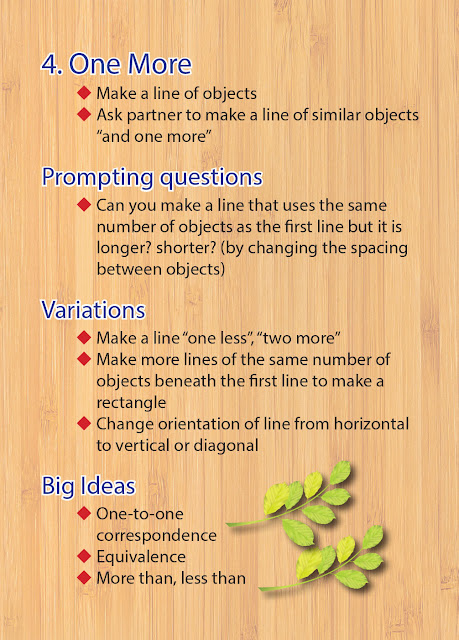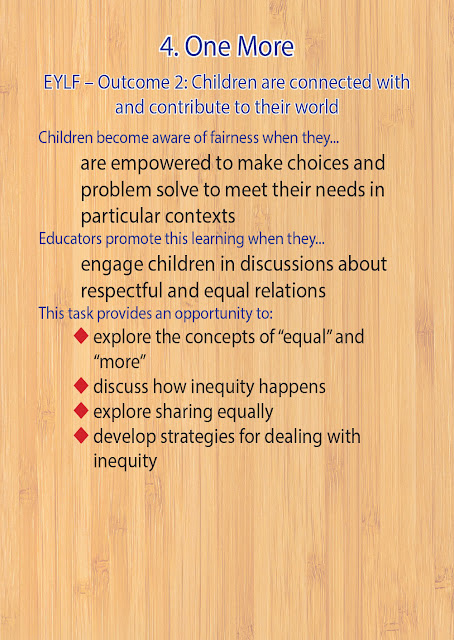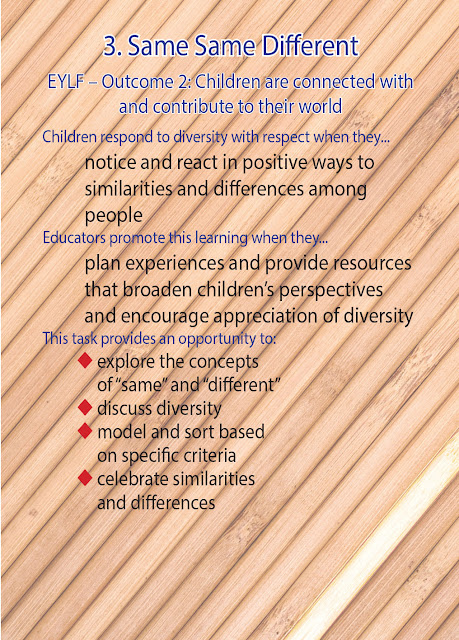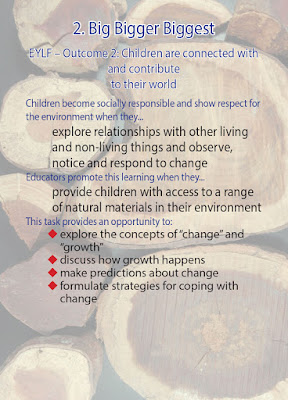Task 4 - One More.
Seems like a very simple task.
You make a line of objects.
You partner makes a similar line - then adds one more.
Seems simple because it is simple. But it is also the beginnings of some very significant mathematics.
- One to one correspondence (I make a line, you make a line) is the starting point for counting and giving a value to a collection of objects.
- "Adding one more" builds the idea of how numbers grow, how to build a sequence that increase by regular steps, how to think about addition.
- This is also pre-algebra: x, x+1....
- And we are learning about more than and less than.
Similar to Task 2 and 3, this task focuses on EYLF Outcome 2, "Children are connected with and contribute to their world."
One of the big ideas that is raised in this task is the idea of equality. In a mathematical sense, we are talking about the balance between two values. In a broader sense, we can take this conversation to include equality between people.
Equal shares is an important lesson in childhood. We can use this maths task to springboard into a discussion of how we should live with each other. From this, we can also develop strategies for dealing with inequality.
Check out the miniMaths website:









